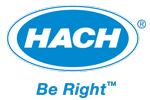Hach DRB200 Dry Thermostat Reactors
Features
- Easy-to-use and fast
- Safe to operate
- Accommodates Most Test Vials
- Expedited repair and warranty service
- Lifetime technical support
- More
The Hach DRB 200 Dry Thermostat Reactor provides unique one-key operation. Programs for Hach procedures with digestion are preprogrammed into the instrument. And it’s fast—the block heats from 20 to 150°C in less than 10 minutes.
The fully insulated heater block of the DRB200 reactor means there can be no skin contact with the heater block. Temperature safeguards are provided to prevent overheating. The lids are transparent and lock do deter premature checking of the progress of the reaction. And the reactor will emit an audible signal and automatically shutdown at the end of the run.
Use the DRB200 reactor for digestions for metals analysis, digestions for nutrients analysis, or culture biological samples. Control temperatures in the reactor from 37 to 165°C in 1°C increments. In addition to preprogrammed digestion methods, use the reactor to program and store up to three custom methods.
The DRB200 reactor can heat solutions in round vials of two different sizes. Small, 16-mm diameter vial wells are suitable for Hach COD, UniCell, TOC, and Test ’N Tube vials. Larger, 20-mm diameter vial wells are intended for sample preparation reaction vessels using the Metals Prep Set.
Two heat blocks in the DRB200 Dual Block Models reactor give the operator independent control of two temperatures and durations. Use this option to run two programs at the same time. A Single Block DRB Reactor cannot be upgraded to a Dual Block Model at a later time.
- Compliance Certifications: CE, cTUVus
- Dimensions: Depth: 31.0 cm (12.2 in.)
- Dimensions: Height: (5.7 in.)
- Dimensions: Width: (9.8 in.)
- Heating Rate: 20 to 150 ºC in 10 minutes
- Number of cuvettes: 9 vials x 13 mm + 2 vials x 20 mm
- Operating Temperature Range: 10 - 45 °C
- Power Requirements (Hz): 50 - 60 Hz
- Power Requirements (Voltage): 115 V AC
- Temperature Range: 37 - 165 ºC (99 - 329 ºF)
- Temperature Stability: ± 2 ºC
- Warranty: 12 months
- Weight: Dual block: 2.8 kg
- Weight 2: Single block: 2.8kg
- What's included: Includes: digital block reactor, power cord and operating manual
In The News
From Paddles to Phytoplankton: Studying Vermont’s Wildest Lakes
For six months of the year, Rachel Cray, a third-year PhD student at the Vermont Limnology Laboratory at the University of Vermont, lives between a microscope and her laptop, running data. For the other six months, she is hiking and canoeing four of Vermont’s lakes, collecting bi-weekly water samples. Cray studies algal phenology across four lakes in Vermont, US, that have low anthropogenic stress—or in other words, are very remote. Funded by the National Science Foundation Career Award to Dr. Mindy Morales, the lakes Cray researches part of the Vermont Sentinel Lakes Program, which studies 13 lakes in the area and, in turn, feeds into the Regional Monitoring Network, which operates in the Northeast and Midwest US.
Read MoreReimagining Water Filtration: How Monitoring and Science Enhance FloWater Filtration Systems
Over 50% of Americans think their tap water is unsafe , according to the Environmental Working Group (EWG). Other recent surveys have found that number to be as high as 70% of persons surveyed. Whether due to increased public awareness of water quality issues or confusion about how municipal water sources are regulated, there is a clear distrust of tap water in the United States. According to industry expert Rich Razgaitis, CEO and co-founder of the water purification company FloWater, this issue creates a damaging cycle. Razgaitis explained that the health and environmental problems associated with contaminated water aren’t the only issues. As people become increasingly aware that some tap water is unsafe, they resort to bottled water.
Read MoreMonitoring New Hampshire’s Aquatic Ecosystems: Continuous Data Collection in the Lamprey River Watershed
New Hampshire’s aquatic ecosystems provide a range of ecosystem services to the state and region. Resources and services like clean water, carbon storage, climate regulation, nutrient regulation, and opportunities for recreation all depend on New Hampshire’s aquatic ecosystems remaining healthy. Jody Potter, an analytical instrumentation scientist at the University of New Hampshire (UNH), is studying these aquatic ecosystems in hopes of developing an improved understanding of ecosystem services and their interactions with climate change, climate variability, and land use changes. [caption id="attachment_39799" align="alignnone" width="940"] Aquatic sensors in the Merrimack River in Bedford, NH, with I-293 in the background.
Read More



















